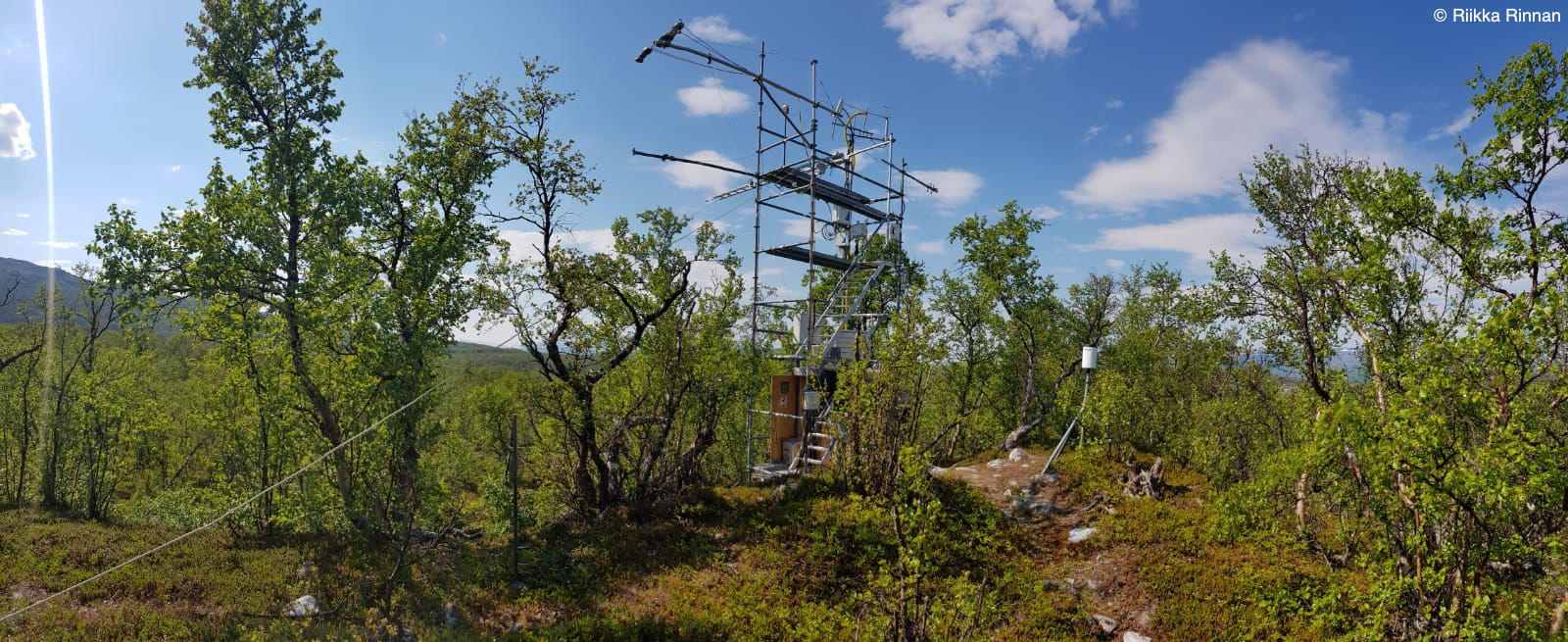Mountain birch forest volatile emissions under different herbivory pressures at the ecosystem scale in the Subarctic
Main aim of this project is to quantify mountain birch forest volatile emissions under different herbivory pressures at the ecosystem scale in the Subarctic. Furthermore, assess the herbivory volatile mediated feedbacks on the climate system, including ecosystem-atmosphere interactions. We measured ecosystem fluxes of VOCs, CO2, H20 using
PTR-TOF-MS (proton-transfer-reaction time-of-flight mass spectrometer) and eddy covariance. Oour real-time gas measurements had been running continuously for three years.
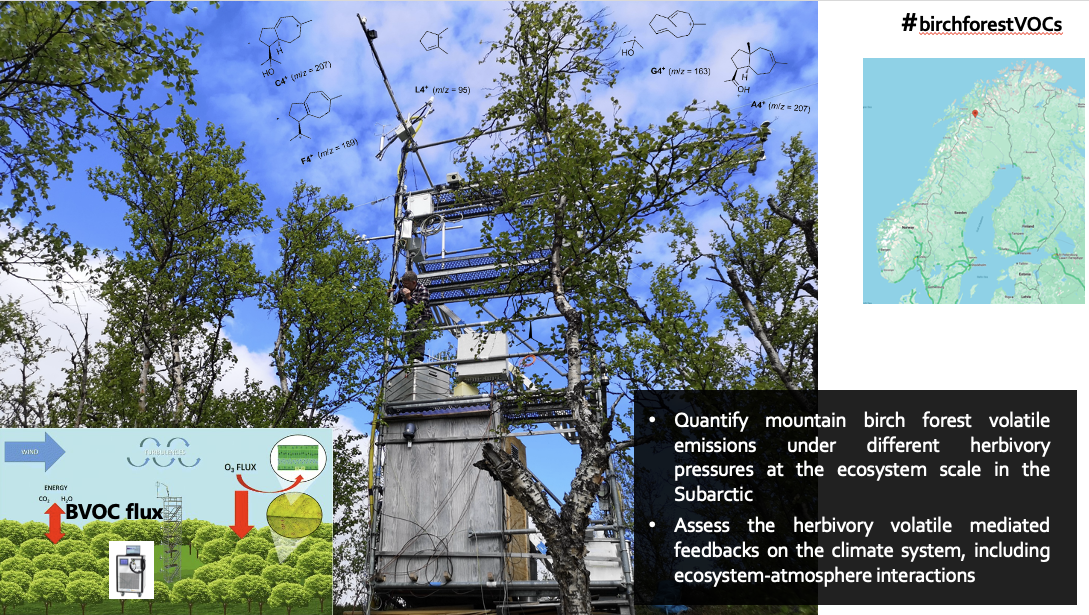
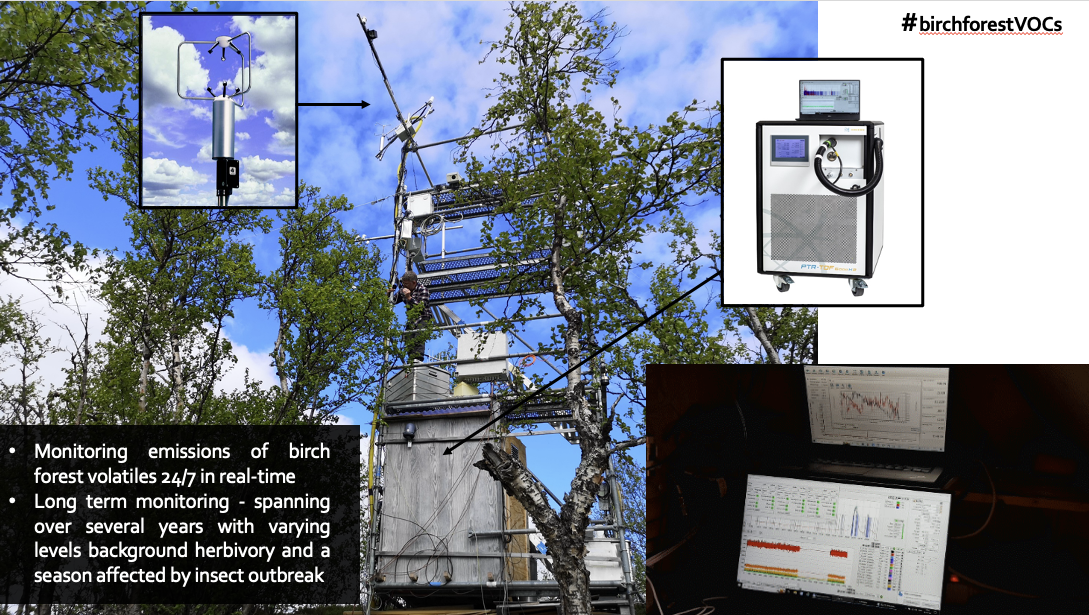
In the mountain birch we also measured VOCs at different scales using dynamic/passive enclosure methods. VOCs were trapped from outgoing air on stainless steel adsorbent cartridges (150 mg Tenax TA, 200 mg Carbograph 1TD, Markes International Limited, Llantrisant, United Kingdom), and analyzed with GC-MS (gas chromatography - mass spectrometry).
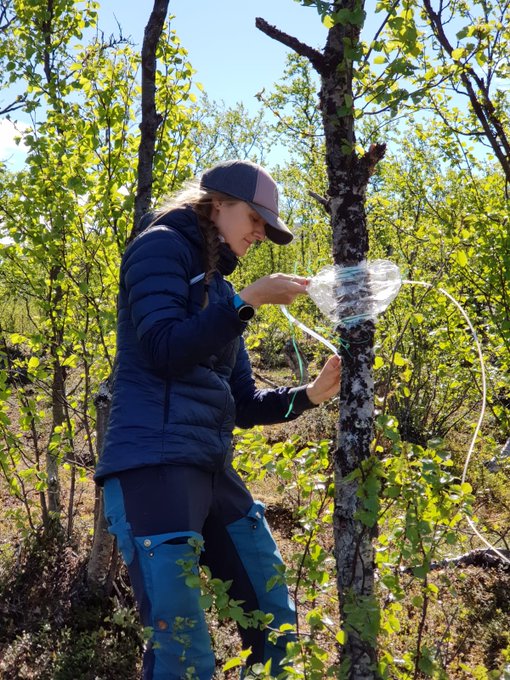
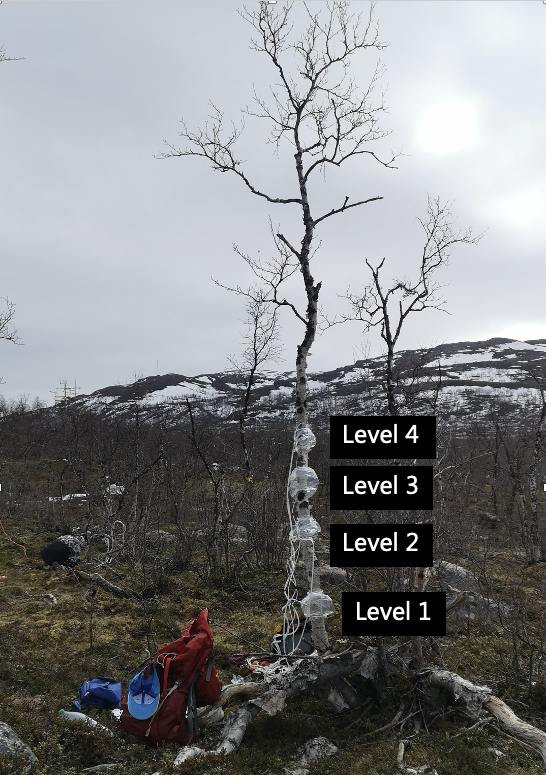
Trunk VOC measurements at different heights from the ground.
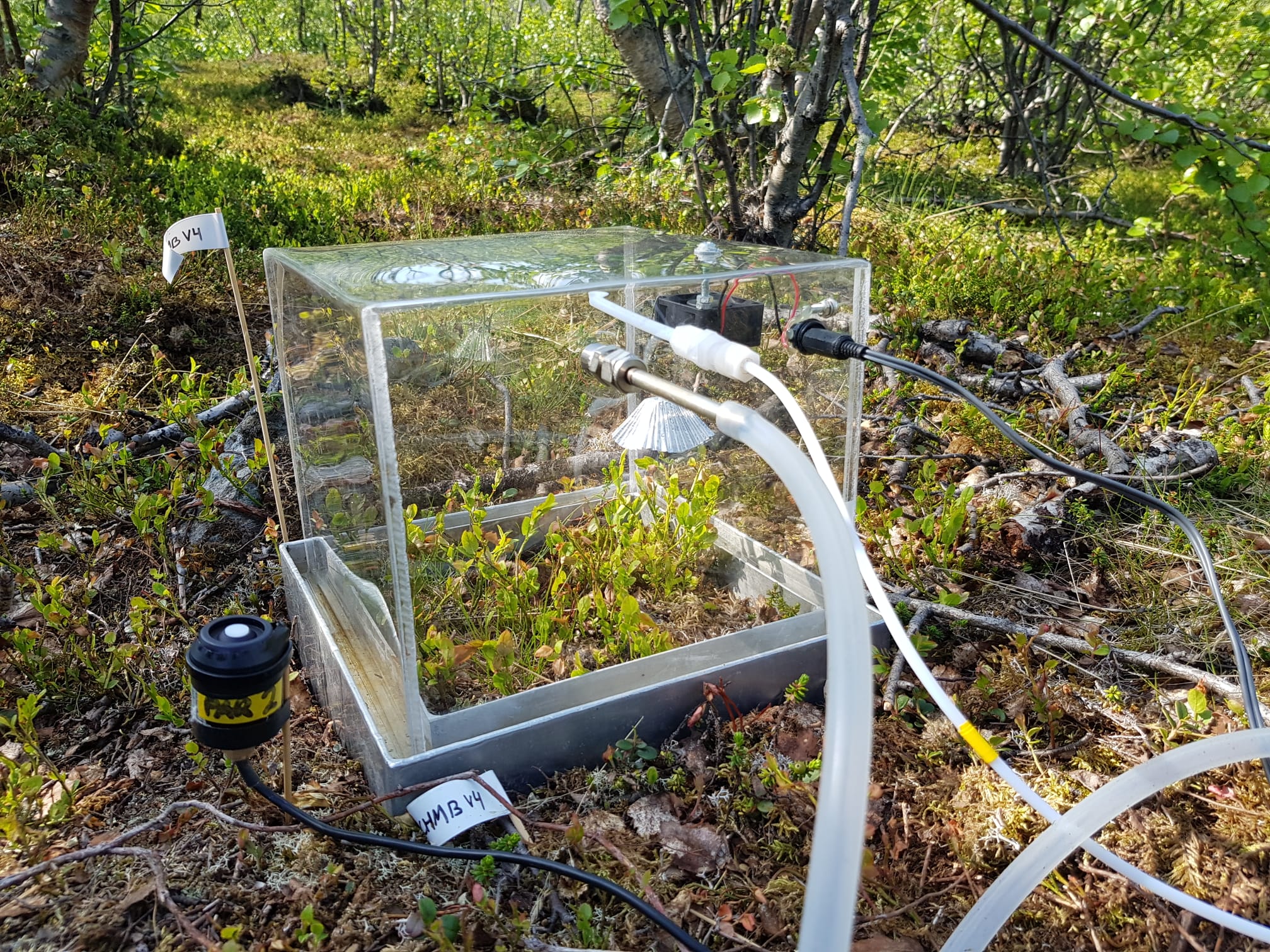 Forest floor VOC measurements from different ground vegetation types.
Forest floor VOC measurements from different ground vegetation types.
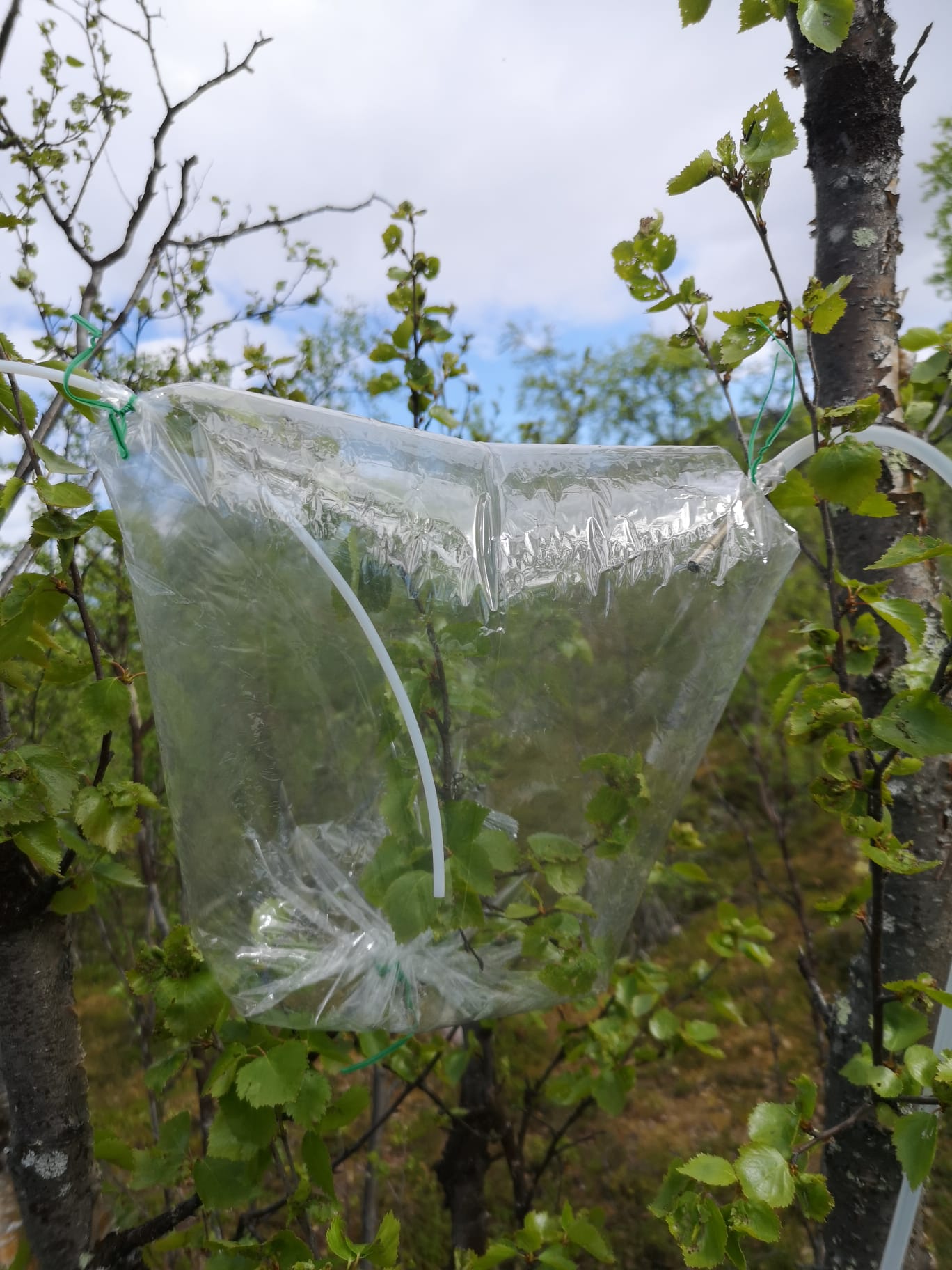

VOC measurements from mountain birch leaves under varying insect herbivore lavels. Winter moth (O. brumata) and autumnal moth (E. autumnata) are locally dominant geometrid moths causing cyclic insect outbreaks approximately every 10 years in Northern Fennoscandia.
High abundance of geometrid moths in 2022, a year before the outbreak in 2023.
This researh is funded by

